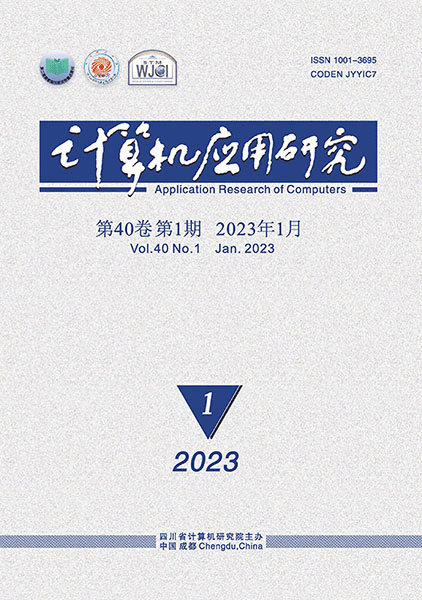Research on solid radioactive waste grasping method based on deep reinforcement learning
Research on solid radioactive waste grasping method based on deep reinforcement learning
1. School of Information Engineering, Southwest University of Science & Technology, Mianyang Sichuan 621000, China
2. School of Information Science & Technology, University of Science & Technology of China, Hefei 230026, China

摘要
In the solid radioactive waste sorting operation, in order to solve the typical problems of disordered radioactive waste, low efficiency of remote teleoperation, and high risk of manual sorting, this paper proposed a method for grasping radioactive solid waste based on deep reinforcement learning. This method used an improved depth Q network algorithm. Through the acquired image information, the robot could continuously interact with the environment and obtain rewards, which were composed of the execution results of the robotic arm actions and the size of the radioactive activity in the radioactive area. According to the size of the Q value, the robot arm got the optimal grasping position. V-REP software established the simulation model of the UR5 robot arm, and different types of solid radioactive waste grasp training and testing were completed in the simulation environment. The simulation results show that when the radioactive solid waste is loosely placed, the method can make the grasping success rate greater than 90%, and the grasping success rate is more than 65% when the radioactive solid waste is placed tightly. The robotic arm grasping operation is not affected by the stacking of objects and the objects with high radioactivity in the radioactive area are preferentially grasped.
基金项目
国家“十三五”核能开发项目(20161295)
西南科技大学研究生创新基金资助项目(19ycx0103)
出版信息
DOI: 10.19734/j.issn.1001-3695.2019.07.0288
出版期卷: 《计算机应用研究》 Printed Article, 2020年第37卷 第11期
所属栏目: System Development & Application
出版页码: 3363-3367
文章编号: 1001-3695(2020)11-033-3363-05
发布历史
引用本文
周祺杰, 刘满禄, 李新茂, 等. 基于深度强化学习的固体放射性废物抓取方法研究 [J]. 计算机应用研究, 2020, 37 (11): 3363-3367. (Zhou Qijie, Liu Manlu, Li Xinmao, et al. Research on solid radioactive waste grasping method based on deep reinforcement learning [J]. Application Research of Computers, 2020, 37 (11): 3363-3367. )
关于期刊

- 计算机应用研究 月刊
- Application Research of Computers
-
刊号
ISSN 1001-3695
CN 51-1196/TP
《计算机应用研究》创刊于1984年,是由四川省科技厅所属四川省计算机研究院主办的计算技术类学术刊物。
《计算机应用研究》瞄准本学科领域迫切需要的前沿技术,及时反映国内外计算机应用研究的主流技术、热点技术及最新发展趋势。主要刊载内容包括本学科领域高水平的学术论文、本学科最新科研成果和重大应用成果。栏目内容涉及计算机学科新理论、计算机基础理论、算法理论研究、算法设计与分析、区块链技术、系统软件与软件工程技术、模式识别与人工智能、体系结构、先进计算、并行处理、数据库技术、计算机网络与通信技术、信息安全技术、计算机图像图形学及其最新热点应用技术。
《计算机应用研究》拥有众多高层次读者、作者,读者对象主要为从事计算机学科领域高、中级研究人员及工程技术人员,各高等院校计算机专业及相关专业的师生。多年来《计算机应用研究》的总被引频次及Web下载率一直名列本学科同类学术刊物前茅,所刊发的学术论文以其新颖性、学术性、前瞻性、导向性、实用性而备受广大读者的喜爱。
收录和评价
- 第二届国家期刊奖百种重点期刊
- 中国期刊方阵双效期刊
- 全国中文核心期刊(北大2023年版)
- 中国科技核心期刊
- 中国科学引文数据库(CSCD)来源期刊
- RCCSE中国核心学术期刊
- 中国计算机学会会刊
- 2020—2022年科技期刊世界影响力指数(WJCI)报告收录期刊
- 中国科技期刊精品数据库全文来源期刊
- 中国学术期刊综合评价数据库来源期刊
- 《中国期刊网》《中国学术期刊(光盘版)》来源期刊
- 2017—2019年中国国际影响力优秀学术期刊(自然科学与工程技术)
- 中国精品科技期刊顶尖学术论文(F5000)项目来源期刊
- 《中国工程技术电子信息网》《电子科技文献数据库》来源期刊
- 英国《科学文摘》(INSPEC)来源期刊
- 《日本科学技术振兴机构数据库》(JST)来源期刊
- 俄罗斯《文摘杂志》(AJ, VINITI)来源期刊
- 美国《艾博思科学术数据库》(EBSCO)全文来源期刊
- 美国《剑桥科学文摘(自然科学)》(CSA(NS))核心期刊
- 波兰《哥白尼索引》(IC)来源期刊
- 美国《乌利希期刊指南(网络版)》(Ulrichsweb)收录期刊





